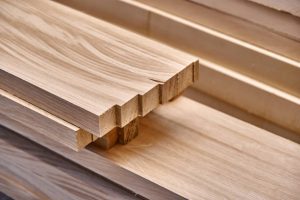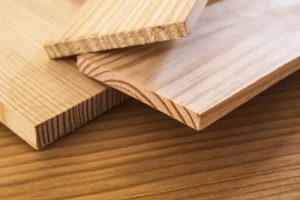When you are out in the market looking to buy wood for construction, firewood or any other purpose, it helps to know about the different types of wood so that you can make the right decision.
Not all woods that we see around us, in objects like furniture, tabletops, etc., are solid wood. Because of the increasing cost and scarce availability of natural wood, the concept of manufactured or engineered wood has become very popular in recent years.
Based on your particular woodworking project and/or requirements, you can go with either solid or manufactured wood, given that you know the differences between the two. So, manufactured wood vs solid wood: which is better? well to answer this question we must first understand about both types of wood.
What is Solid Wood?
Solid Wood is the natural lumber that we get from trees. Traditional lumber has been in use for making furniture, wood objects, crafted items, etc. for centuries. However, the scarce availability of this type of wood in recent years has forced us to use manufactured wood instead.
Based on origin and growth, solid lumber can be divided into two major types: hardwood and softwood.
Solid type of wood obtained from trees is cut into timber, which is then used for making furniture, flooring, doors, and other purposes. Common and most used types of solid lumber include oak, maple, mahogany, birch, ash, pine, teak, rosewood, and cherry.
The easiest way to identify natural wood is by its grain structure, which is beautiful and unique. Grain structures of two different wood species are never alike. Solid lumber is durable and strong and usually has good resistance to moisture, insects and rot. Another way to identify wood is by its color, which may range from light yellow to dark brown or red, depending on the species. Solid wood obtained from natural jungles is non-renewable and therefore costly.
What is Manufactured Wood?
Engineered or manufactured wood is a product that looks and acts similar to wood, but is manufactured in factories/laboratories instead of being obtained from natural trees.
Since there is only so much natural wood available in the world, the price of solid wood furniture is generally very high and cannot be afforded by everyone. This gave birth to the concept of manufactured wood.
Plywood, HDF (high-density fibreboard), particleboard, veneered board, and MDF (medium-density fibreboard) all are examples of engineered woods. These are easily available and cost effective.
Engineered wood is manufactured by adding two or more different materials, including particles, veneers, fibres, and thin wood boards, together. The use of engineered wood is common in a variety of low-cost woodworking projects, ranging from furniture to plywood, windows, doors, desks, kitchens, bookshelves, wardrobes, and others. Surfaces of items are furnished with solid wood layers or veneers to achieve a more natural look. These are usually water-resistant and easy to clean and work with.
Veneered boards have natural wood veneer on surfaces, which make them look and feel exactly like real wood.
Manufactured Wood Vs Solid Wood
Now that you have a good basic idea of solid lumber and manufactured wood, let’s discuss the various differences between the two, and which is most suited for what purpose.
Manufacturer
Solid timber wood is obtained directly from trees, while engineered wood is manufactured by combining different boards, participles, fibres, veneers, etc.
Types
Common examples of solid lumber include oak, pine, maple, teak, and mahogany. Common types of engineered wood include MDF, particleboard, plywood, and veneered board.
Durability and Life
Solid wood has high durability and objects last for decades. Composite wood is comparatively less durable with limited life.
Moisture Resistance
Solid lumber is resistant to moisture, but cannot stand up to constant exposure. Engineered wood is more resistant and can withstand exposure to moisture.
Hardness
Solid lumber may be very hard or soft, depending on the species. Manufacturer woods such as MDF and HDF are comparatively harder and denser.
Availability
Solid wood is non-renewable and trees might take years to grow again. Manufactured woods are easily available as well as environmentally sustainable.
Cost
Since natural wood is scarcely available and has high demand, it’s much more expensive compared to engineered wood, which is readily available.
Now that you know everything about the basic differences between solid and engineered wood, we hope you are ready to make better buying decisions for your woodworking projects. Most of the furniture and objects we see and use today are made from composite wood.
If you are looking to buy top-quality, all-natural solid lumber obtained sustainably from African forests, visit our official website to explore our wide range of African timber and wood species. We at CameroomTimberExportSarl are the largest supplier of raw African wood logs and timber to customers in over 15 countries and at the best price guaranteed.



